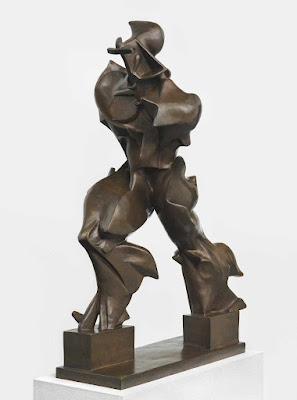The Avant-Garde in the Modern Age: Pioneering the Future of Art and Thought
What is Avant-Garde?
Key Characteristics of Avant-Garde Movements
Major Avant-Garde Movements in the Modern Age
1. Futurism (1909–1944):-
2. Dadaism (1916–1924):-
3. Surrealism (1924–1950s):-
4. Constructivism (1915–1930s):-
5. Bauhaus (1919–1933):-
6. Abstract Expressionism (1940s–1950s):-
The Avant-Garde Today: Still Pushing Boundaries
Final Thoughts
Avant-garde movements have left an indelible mark on culture, proving that art is not just about aesthetics but about shaping ideas and questioning the world around us. As we move further into the digital age, the avant-garde remains a crucial force in defining the future of artistic and intellectual discourse.
What are your thoughts on the avant-garde in today’s world? Share in the comments below!
In French, avant-garde means the “vanguard” or the “advance guard” — basically the people and ideas that are ahead of their time. Usually it refers to a movement in the arts, like Dadaism, or in politics, like anarchism. Avant-garde can also be used as an adjective to describe something that's cutting-edge.
The avant-garde has always been at the forefront of cultural evolution, challenging the status quo and paving the way for new artistic and intellectual paradigms. In the modern age, avant-garde movements have not only revolutionized art but also influenced philosophy, politics, and everyday life. This blog explores the essence of the avant-garde and its impact on the contemporary world.
Key Characteristics of Avant-Garde Movements
- Innovation & Experimentation: Avant-garde artists and thinkers seek new forms of expression.
- Radicalism: They often challenge societal, political, and artistic conventions.
- Interdisciplinary Influence: The movement spans literature, music, visual arts, architecture, and even technology.
- Provocation: Works often provoke thought and discussion, questioning established beliefs.
Major Avant-Garde Movements in the Modern Age
1. Futurism (1909–1944):-
Futurism embraced speed, technology, and modernity, glorifying the dynamism of the industrial world. Led by Filippo Tommaso Marinetti, it celebrated movement, urban life, and even war as a means of progress.
Dada was a radical anti-art movement that rejected reason and logic in favor of chaos and absurdity. Figures like Marcel Duchamp and Tristan Tzara used satire, nonsense, and experimental forms to critique war and traditional values.
3. Surrealism (1924–1950s):-
Influenced by Sigmund Freud’s theories of the unconscious, Surrealists like Salvador Dalí and André Breton sought to merge dreams and reality, creating bizarre and thought-provoking imagery.
4. Constructivism (1915–1930s):-
Originating in Russia, Constructivism promoted abstraction and utilitarian design. Artists like El Lissitzky and Alexander Rodchenko aimed to integrate art into everyday life, often working in propaganda and architecture.
5. Bauhaus (1919–1933):-
The Bauhaus school, founded by Walter Gropius, revolutionized modern design by blending art, craft, and technology. It promoted functional aesthetics that continue to influence architecture and design today.
6. Abstract Expressionism (1940s–1950s):-
In post-war America, artists like Jackson Pollock and Mark Rothko pioneered Abstract Expressionism, emphasizing spontaneous and emotive creation. Their works showcased raw emotion and the subconscious mind.
The Avant-Garde Today: Still Pushing Boundaries
The spirit of avant-garde is alive in digital art, virtual reality, AI-generated works, and experimental music. Contemporary artists continue to challenge norms, addressing issues like climate change, identity, and technology’s role in society.
Final Thoughts
Avant-garde movements have left an indelible mark on culture, proving that art is not just about aesthetics but about shaping ideas and questioning the world around us. As we move further into the digital age, the avant-garde remains a crucial force in defining the future of artistic and intellectual discourse.
What are your thoughts on the avant-garde in today’s world? Share in the comments below!



Comments
Post a Comment